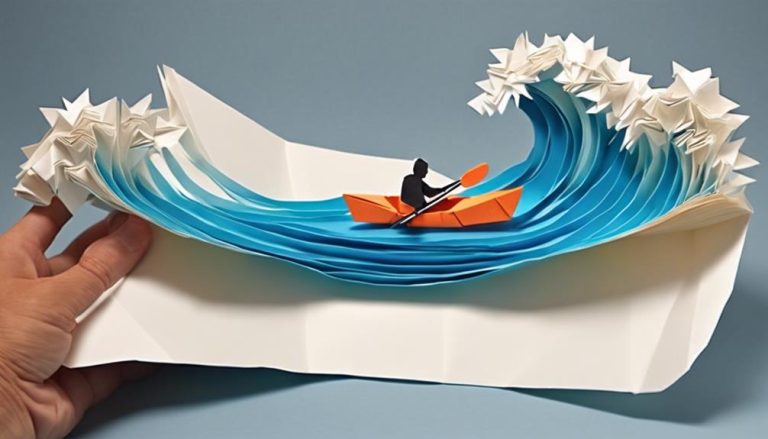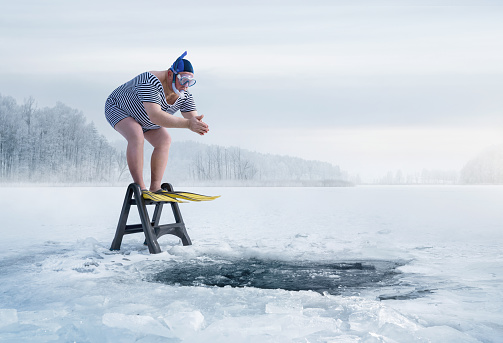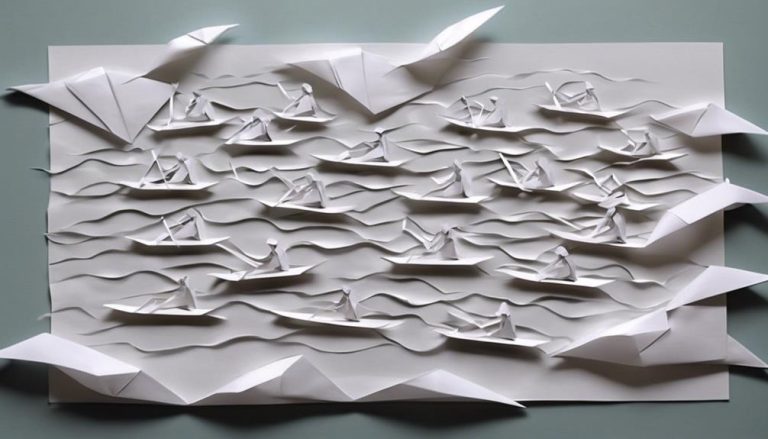General Rules of Playing Wakeboarding
Are you ready for an exhilarating adventure on the water? If you’re eager to experience the adrenaline rush of wakeboarding, it’s important to familiarize yourself with the general rules of the game. From safety precautions to mastering body positioning, this article will equip you with the essential knowledge you need to dive into the world of wakeboarding confidently. So, prepare your equipment, scout out the ideal location, and get ready to conquer the waves while showing respect for your fellow riders and the environment.

Wakeboarding is an exciting sport that combines elements of water skiing, snowboarding, and surfing. It involves being towed behind a boat or cable system while riding a wakeboard on the water’s surface. However, before you jump in, it’s crucial to prioritize safety. This means wearing a well-fitted life jacket and ensuring that the boat driver or cable operator is experienced and knowledgeable about wakeboarding practices.
Proper body positioning is another vital aspect of wakeboarding. It’s essential to maintain a balanced stance with your knees slightly bent, weight evenly distributed, and arms extended. This position allows you to absorb the wake’s impact and maintain control while carving through the water. Additionally, always keep your eyes focused forward, looking ahead to anticipate any obstacles or changes in the water’s surface.
Respecting your fellow wakeboarders and the environment is equally important. Always be mindful of other riders in the area and maintain a safe distance to prevent collisions. Additionally, be considerate of noise levels and avoid disturbing wildlife or other individuals enjoying the water. Remember, preserving the natural beauty of the surroundings ensures that wakeboarding remains a sustainable and enjoyable activity for everyone.
Now that you have a brief introduction to wakeboarding’s general rules, it’s time to delve deeper into each aspect and become a skilled and responsible wakeboarder. So, let’s embark on this thrilling journey together and make the most of your wakeboarding adventures!
Safety Guidelines
To ensure your safety while wakeboarding, follow these guidelines.
Water safety is of utmost importance when engaging in any water sport, and wakeboarding is no exception. By taking the necessary precautions, you can prevent injuries and have a more enjoyable experience on the water.
First and foremost, always wear a properly fitted life jacket or personal flotation device (PFD). This is essential for your safety, as it will keep you afloat in case of a fall or accident. Choose a PFD that’s approved by the appropriate authorities and ensure that it fits snugly and comfortably.
Additionally, it’s crucial to be aware of your surroundings at all times. Before entering the water, familiarize yourself with the area and identify any potential hazards such as rocks, shallow areas, or other boats. Pay attention to any signs or instructions provided by the authorities.
When wakeboarding, it’s essential to have a spotter on the boat. This person will keep an eye on you and alert the driver if any issues arise. They’ll also help you communicate with the driver, ensuring a safer and more controlled experience.
Furthermore, always start with a thorough warm-up before hitting the water. Stretch your muscles to prevent strains or sprains, and ensure that you’re physically prepared for the activity. Remember to stay hydrated and take breaks as needed to avoid exhaustion.
Equipment and Gear
When wakeboarding, having the right equipment and gear is essential for a safe and enjoyable experience on the water. Here are some key points to consider when it comes to your wakeboarding equipment and gear:
-
Buying Options: There are several options available for purchasing wakeboarding equipment and gear. You can choose to buy new gear from a local water sports store or online retailer. This allows you to have access to the latest technology and designs. Alternatively, you can also consider buying used gear, which can be more cost-effective. Look for reputable sellers or consider joining online wakeboarding communities where you can find used gear being sold by fellow wakeboarders.
-
Maintenance Tips: Proper maintenance of your wakeboarding equipment and gear is crucial to ensure its longevity and optimal performance. Here are some maintenance tips to keep in mind:
-
Rinse your gear with fresh water after each use to remove any salt or dirt that may have accumulated. This helps prevent corrosion and damage.
-
Store your gear in a cool, dry place away from direct sunlight. Exposure to excessive heat and sunlight can weaken the materials and cause them to deteriorate.
-
Regularly inspect your gear for any signs of wear and tear. Replace any damaged parts or equipment to maintain safety and performance.
-
Follow the manufacturer’s instructions for cleaning and maintenance. Different gear may require specific care, so it’s important to follow the guidelines provided.
Choosing the Right Location
When it comes to choosing the right location for wakeboarding, there are a few key points to consider.
Firstly, ideal water conditions are crucial for a smooth and enjoyable ride. Look for a location with calm waters, minimal waves, and limited boat traffic.
Secondly, safety should always be a top priority. Choose a location that’s designated for wakeboarding, with clear boundaries and safety measures in place to protect both riders and other water users.
Ideal Water Conditions
For the best wakeboarding experience, you should look for a location with calm and clear water between the hours of sunrise and sunset. The ideal water temperature for wakeboarding is around 70 to 80 degrees Fahrenheit. This temperature provides a comfortable environment for both the rider and the equipment.
Additionally, wakeboarding is best enjoyed during the daytime when visibility is at its highest. This allows you to see any obstacles or hazards in the water and ensures a safer and more enjoyable ride.
The calm and clear water conditions are crucial for maintaining balance and stability while performing tricks and jumps. So, when choosing the right location for wakeboarding, consider the ideal water temperature and the best time of day to make the most of your experience.
Safety Considerations
To ensure your safety while wakeboarding, it’s important to carefully choose the right location, taking into consideration factors such as water conditions and potential hazards. By selecting a suitable spot, you can minimize the risk of accidents and enjoy a more enjoyable and secure wakeboarding experience.
Here are some safety precautions to keep in mind when choosing a location:
-
Water conditions: Opt for calm and clear waters with minimal currents or waves. Choppy waters can make it difficult to maintain balance and control, increasing the chances of accidents.
-
Potential hazards: Look out for any obstacles in the water, such as rocks, buoys, or submerged objects. Avoid locations with heavy boat traffic, as it can create dangerous situations.
-
Importance of wearing a life jacket: Always wear a properly fitting and Coast Guard-approved life jacket. This essential safety gear can save your life in case of a fall or collision.
Learning Proper Body Positioning
Get on the board and place your feet parallel to each other and perpendicular to the direction of the boat. Learning proper body positioning is crucial for wakeboarding as it ensures proper balance and body alignment, allowing you to perform tricks and maneuvers with ease. Here are some important tips to help you achieve the correct body position:
-
Keep your knees slightly bent: This will help you absorb the impact of the waves and maintain stability while riding.
-
Engage your core muscles: Your core muscles play a vital role in maintaining balance and stability. Keep them engaged throughout the ride to enhance your control over the board.
-
Tighten your abdominal muscles
-
Engage your lower back muscles
-
Lean back slightly: Leaning back slightly will help you maintain balance and prevent you from falling forward. However, avoid leaning too far back as it can cause you to lose control.
-
Extend your arms: Extend your arms in front of you, parallel to the board, to maintain balance and stability.
-
Keep your elbows slightly bent
-
Avoid locking your elbows
By following these body positioning techniques, you’ll be able to maintain proper balance and body alignment, allowing you to ride the waves with confidence and control.
Don’t forget to practice regularly and seek guidance from experienced wakeboarders to further refine your skills. With time and dedication, you’ll become a master of wakeboarding and enjoy the exhilarating experience it offers.
Understanding Hand Signals
To understand hand signals while wakeboarding, you need to familiarize yourself with the compound preposition ‘in between’. Hand signals are an important aspect of water safety and non-verbal communication in wakeboarding. They allow riders and boat drivers to communicate effectively without the need for verbal instructions, which can be difficult to hear over the noise of the boat and the water.
One common hand signal used in wakeboarding is the thumbs up gesture, which indicates that everything is okay. This signal is usually given by the rider to the boat driver to let them know that they’re ready to start or continue the ride. On the other hand, a thumbs down gesture is used to signal a problem or to indicate that the rider wants to stop the ride.
Another important hand signal is the ‘cut’ signal, which is made by crossing the arms in front of the body to form an X shape. This signal is used to communicate to the boat driver that the rider wants to change direction and go in the opposite direction of the boat’s current path.
Additionally, the ‘in between’ signal is made by extending both arms out to the sides and pointing towards the middle. This signal is used to communicate to the boat driver that the rider wants to ride in between the boat’s wake, which creates a smoother and more challenging ride.
Understanding these hand signals is crucial for both the rider and the boat driver to ensure a safe and enjoyable wakeboarding experience. By effectively communicating through non-verbal means, riders can focus on their performance while the boat driver can navigate and adjust the speed and direction accordingly.
Communication on the Water
When wakeboarding, effective communication is crucial to ensure a safe and enjoyable experience on the water.
There are two main forms of communication to be aware of: hand signals and verbal communication. Hand signals are essential for quick and clear communication between the rider and the boat driver.
Verbal communication, on the other hand, allows for more detailed instructions and feedback.
Clear and concise communication is key to avoiding accidents and maximizing the wakeboarding experience.
Hand Signals for Communication
Use hand signals to communicate with other wakeboarders on the water. Effective communication is essential for water safety and coordination while wakeboarding. By using hand signals, you can convey important messages without the need for verbal communication.
Here are some commonly used hand signals:
- To start: Extend your arm and point your finger in the direction you want to go.
- To stop: Hold your hand up in a flat palm position.
- To speed up: Make a circular motion with your hand above your head.
- To slow down: Move your hand in a downward motion.
- To indicate danger: Place your hand behind your head, forming a ‘T’ shape.
Non-verbal communication through hand signals promotes seamless communication and fosters a sense of belonging among wakeboarders. It allows for quick and efficient communication, ensuring everyone’s safety and enhancing the overall wakeboarding experience.
Verbal Communication While Wakeboarding
Communicate effectively with other wakeboarders on the water by utilizing verbal communication techniques. While hand signals are important for communication while wakeboarding, verbal communication can also play a crucial role in ensuring effective teamwork and coordination. By using clear and concise verbal instructions, you can convey your intentions and actions to other wakeboarders, leading to a safer and more enjoyable experience on the water.
To enhance your verbal communication skills while wakeboarding, consider the following techniques:
| Verbal Communication Techniques | Benefits |
|---|---|
| Use simple and clear language | Ensures understanding and reduces confusion |
| Speak loudly and clearly | Allows others to hear your instructions |
| Give timely and specific commands | Helps others anticipate your actions |
| Use positive and encouraging words | Creates a supportive and inclusive environment |
| Provide feedback and communicate about safety | Promotes awareness and minimizes risks |
Importance of Clear Communication
How can you ensure effective communication on the water while wakeboarding? Clear communication is crucial for a successful wakeboarding experience. To improve your communication techniques and promote effective teamwork, consider the following:
-
Non-verbal communication:
-
Hand signals: Use hand signals to communicate with your boat driver, indicating when to speed up, slow down, or stop.
-
Eye contact: Maintain eye contact with your fellow wakeboarders to establish a connection and anticipate their next moves.
-
Verbal communication:
-
Use simple and concise commands: Keep your instructions clear and straightforward, ensuring everyone understands what needs to be done.
-
Establish a communication system: Develop a set of communication signals or phrases that everyone on the boat understands, enabling quick and efficient communication.
Respect for Other Riders and the Environment
When wakeboarding, how can you ensure that you show respect for other riders and the environment? Environmental awareness, sportsmanship, and etiquette are essential in promoting a positive wakeboarding experience for everyone involved. By following these principles, you can demonstrate respect for both fellow riders and the natural surroundings.
To emphasize the importance of respect in wakeboarding, let’s explore some key guidelines in the form of a table:
| Respecting Other Riders | Respecting the Environment |
|---|---|
| Communicate your intentions clearly to avoid collisions. | Minimize wake size and noise to preserve the tranquility of the surroundings. |
| Give way to riders who are already on the course. | Avoid disturbing wildlife and vegetation by staying within designated areas. |
| Be mindful of your wake’s impact on other riders’ experience. | Dispose of any trash properly and leave the area cleaner than you found it. |
By adhering to these principles, you contribute to a positive wakeboarding community that values inclusivity and sustainability. Remember that respect is a two-way street, and by showing consideration for others, you create an environment where everyone feels welcomed and valued.
Furthermore, it is crucial to stay informed about any local rules and regulations regarding wakeboarding. Some locations may have specific guidelines to protect the environment or ensure the safety of all participants. By familiarizing yourself with these guidelines and following them diligently, you demonstrate respect not only for other riders but also for the natural environment.
Frequently Asked Questions
What Are Some Common Mistakes That Beginners Make When Learning Wakeboarding?
When learning wakeboarding, beginners often make common mistakes that can hinder their progress. It’s important to focus on proper technique from the start.
Some common mistakes include:
- Not bending your knees enough
- Leaning back too far
- Not keeping your weight centered
By avoiding these mistakes and practicing proper technique, you can improve your skills and enjoy wakeboarding to the fullest.
How Long Does It Typically Take to Become Proficient at Wakeboarding?
When it comes to becoming proficient at wakeboarding, the time it takes varies from person to person.
Overcoming the fear of wakeboarding is a crucial step in progressing.
It’s important to choose the right wakeboard size and type based on your skill level and riding style.
Practice regularly and focus on building your balance and control on the board.
With dedication and perseverance, you can become proficient in wakeboarding in a matter of months.
Are There Any Specific Exercises or Stretches That Can Help Improve Wakeboarding Skills?
To improve your wakeboarding skills, there are exercises and stretches that can be beneficial. Engaging in exercises like squats, lunges, and planks can help build strength and stability in your core and lower body, which are crucial for balance on the board.
Stretching your hip flexors, hamstrings, and shoulders can also improve your flexibility and range of motion.
Incorporating these exercises and stretches into your regular routine can help enhance your wakeboarding abilities.
What Should I Do if I Fall off the Wakeboard While Riding?
When you fall off the wakeboard while riding, it’s important to stay calm and focused. Remember, falling is a part of the sport and happens to everyone.
To recover, try to maintain your balance and swim away from the wakeboard. Once you’re a safe distance away, signal to the boat driver that you’re ready to be picked up.
Keep in mind that practicing proper technique and wearing a life jacket can help prevent falls in the first place.
Are There Any Age Restrictions for Participating in Wakeboarding?
Age restrictions for wakeboarding vary depending on the specific location and organization. It’s important to check with the governing body or facility to determine the minimum age requirement.
Safety precautions for wakeboarding include wearing a life jacket, using proper equipment, and being aware of your surroundings. Always follow the rules and guidelines provided by the experts to ensure a safe and enjoyable experience.






